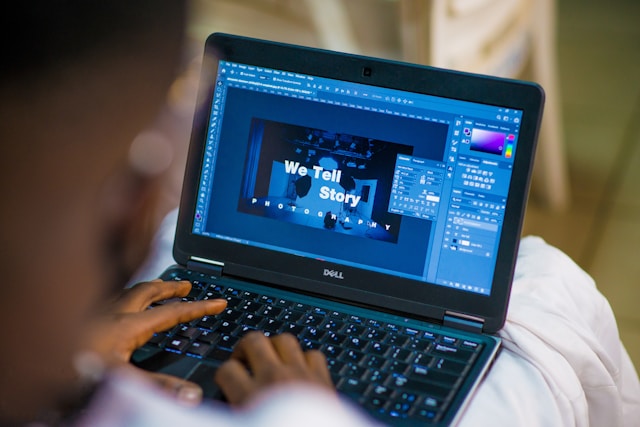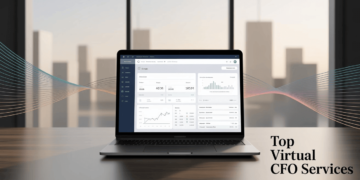In the current market, visuals are a driving force, and having a great design is not a luxury; it is a competitive advantage. Whether businesses want to build a brand, launch a product, or boost their digital presence, having an appropriate graphic designer can make or break how the business will be perceived by the audience.
However, when it’s time to hire, businesses are often faced with the question of whether to hire a graphic designer locally in the USA or explore the talent offshore. Both options have unique benefits and challenges. In simple terms, hiring graphic designers in the USA can offer several cultural alignments and ease of collaboration. Offshore graphic designers globally are especially known to have cost advantages and diverse creative perspectives.
In this article, you will learn the major differences between hiring a designer in the US versus offshore. The details will cover cost, communication, quality, and scalability of each of the options. Accordingly, businesses will be able to make a decision based on the needs and the budget.
Importance of a graphic designer for business success
In today’s ever-growing digital world, first impressions are made in a matter of a few seconds, and very often, these are visual. A graphic designer is someone who makes creatives look good. They are visual strategists who can translate the brand’s identity, values, and goals into compelling visuals that connect positively with the audience.
Some critical roles played by a graphic designer in business growth include:
-
Helps in building a strong brand identity:
A graphic designer can shape the look and feel of a brand. From the logo and typography to the color palette and marketing collateral, they influence the brand thoroughly. A consistent and well-designed visual identity builds trust, loyalty, and recognition.
- Complex ideas can be communicated in a simple way:
Graphic designers can turn information into visuals into data that is understandable and retainable. From an infographic, pitch deck, or social post, graphic designers can help businesses deliver their messages to the right audience effectively and quickly.
- Enhances the user experience:
From a website layout to product packaging, a designer makes sure every interaction with the customer is clear, intuitive, and enjoyable, thus boosting the engagement and conversion rates effectively.
- They support marketing and sales efforts:
The creative assets can drive digital campaigns, social media, email marketing, and advertising positively. A designer ensures these materials are beautiful and strategically aligned to drive the audience, thus driving results prominently.
- Help in setting you apart from competitors:
In the present crowded market scenario, aesthetics play a pivotal role. An experienced graphic designer helps in branding, standing out with consistent style, original visuals, and high-quality execution that highly reflects professionalism.
- Save resources and time:
Professionally designed creatives reduce the back-and-forth revisions, thus speeding up the campaign execution and avoiding inconsistency of the brand, which saves both time and money in the long run.
Benefits of hiring a graphic designer in the USA:
Hiring a graphic designer based in the US has various advantages, primarily for businesses that are operating within the domestic market. From real-time collaboration to cultural fluency, here are the advantages of hiring a graphic designer locally for design needs:
- Aligned with the time zone:
Working in the same time zone makes communication, collaboration, and project turnarounds faster, easier, and more seamless. This is especially when quick revisions or real-time brainstorming are a necessity.
- Relevant culturally and in the market:
US-based graphic designers tend to have a deeper understanding of the local consumer preferences, brand expectations, and are aware of the cultural nuances, which is essential for campaigns that resonate with the target audience.
- Relatively stronger communication skills:
US-based designers tend to have a higher proficiency in English. Additionally, they also have a similar workplace etiquette and professional norms, which can reduce miscommunication and streamline the project management process.
- Accountability and easier vetting:
It is much easier to verify the credentials, review the portfolio, conduct interviews, and have in-person interviews when required. Additionally, contracts are taken care of by legal frameworks, which offer added peace of mind.
Benefits of hiring a graphic designer offshore:
With the increasing norm of remote work and the evolution of digital collaboration tools, businesses globally are increasingly tapping into offshore design talent. Hiring a graphic designer from another country can offer various significant benefits for a business who are looking to scale creatively without spending too much.
- Efficient cost allocation:
Offshore designers often tend to charge significantly lower rates than their US-based counterparts. Sometimes, it could be up to 50-70% less, which could be quite profitable for a business. This also allows the business to stretch their design budgets without compromising on the output or budget.
- Increased access to global talent:
Hiring offshore opens doors to a varied pool of talent in the creative profession. With unique designs, creative perspectives, and experiences, businesses can give their branding and campaigns a fresh edge.
- Perfect for project-based work:
For short-term projects like pitch decks, social media templates, landing pages, or seasonal campaigns, offshore designers tend to provide flexibility and pocket-friendly solutions, which is perfect for startups and agencies.
- Increased productivity cycle:
The ability to work across multiple time zones by the designer can prove to be an asset for the business. Projects being sent at the end of the day can be completed overnight by offshore designers, thus speeding up turnaround time in a “follow-the-sun” model.
Hiring a graphic designer in the US vs offshore: What’s better for the business?
There are various factors like speed, cost, control, and collaboration that help a business choose whether they choose to hire a graphic designer in the US or offshore. Here’s a quick guide to help you decide:
Businesses can choose a US-based designer when:
- They need a real-time collaboration in the same
- The project requires a deep understanding of the US culture, trends, and regulations
- When the designer is required to be a part of the team meetings or work closely with the marketing or sales team on a regular basis.
- The business is planning to build a long-term creative partnership or an in-house team.
- When quality, consistency, and brand alignment are the top priorities of the business.
Businesses can choose an offshore-based designer when:
- They have a tight budget but require high-quality design output.
- They need help with short-term or high-volume design projects
- The internal team can manage communication across borders effectively.
- The business is comfortable working across varied time zones and using adequate project management tools.
- They want to scale the creative output quickly without expanding the headcount.
Imagine hiring cost-effective talent, without the need to pay huge agency overheads; that’s what modern staffing platforms do. By eliminating the middlemen and markups involved, they provide direct access to vetted profiles of skilled graphic designers. You retain 100% control over the hiring process, with insights into each step, on a single platform. Their approach ensures the sourcing of top talent without compromising budget, skills, culture-fit, and compliance. Thus, a modern staffing platform is a great option for hiring an offshore graphic designer if you want a transparent and direct-hire model.
Conclusion:
When businesses want to hire a graphic designer, there are no specific guidelines. Both US-based and offshore designers bring unique features to a business. The key is to align the decision with the business goals, budget, and internal workflow capacities. Some businesses often find success with a hybrid mode, thus leveraging both onshore and offshore resources to balance quality and scalability.










